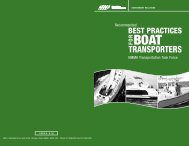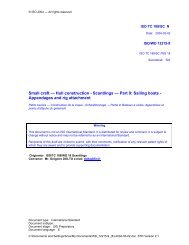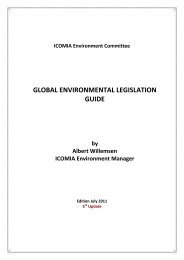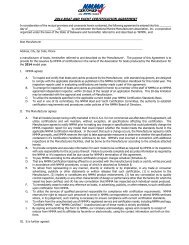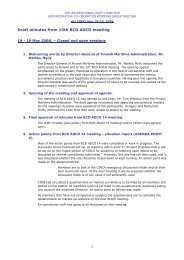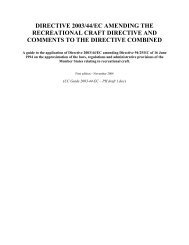Intellectual Property Protection and Enforcement Manual - Ipr-policy.eu
Intellectual Property Protection and Enforcement Manual - Ipr-policy.eu
Intellectual Property Protection and Enforcement Manual - Ipr-policy.eu
You also want an ePaper? Increase the reach of your titles
YUMPU automatically turns print PDFs into web optimized ePapers that Google loves.
•<br />
•<br />
•<br />
•<br />
•<br />
•<br />
•<br />
Develop guidance for buyers on how to assess the legitimacy of the supplier.<br />
Qualify vendors through periodic audits of facilities <strong>and</strong> documents. Consider<br />
reducing your sourcing base to enhance auditing ability.<br />
Control <strong>and</strong> audit the receipt of product ingredients <strong>and</strong> components to ensure that<br />
they meet company specifications.<br />
Employ the concept of “strict liability” for failure to deliver authentic components<br />
<strong>and</strong> parts in contracts with suppliers to hold the suppliers responsible for fraudulent<br />
goods.<br />
Consider requiring vendors to meet st<strong>and</strong>ards published by outside organizations.<br />
Establish an internal process for dealing with received counterfeit products from a<br />
supplier. Destruction, which may impact any financial issues <strong>and</strong> products returned<br />
to the supplier, could be released back into the stream of commerce.<br />
Institute shipping policies to protect the integrity of raw materials <strong>and</strong> component<br />
parts including (1) guidelines to ensure the physical security of overseas factories in<br />
the supply chain (for example, like those for the Customs-Trade Partnership Against<br />
Terrorism/C-TPAT); (2) using seals on all containers <strong>and</strong> noting seal numbers on<br />
shipping manifests to protect containers from being opened <strong>and</strong> resealed; <strong>and</strong><br />
(3) developing partnerships with CBP to exchange information <strong>and</strong> target shipments<br />
suspected of containing counterfeit products.<br />
Legitimacy of Customers <strong>and</strong> Distributors<br />
Counterfeiters often pose as legitimate business owners <strong>and</strong> seek to purchase products in bulk in<br />
order to blend fake products <strong>and</strong> maximize returns <strong>and</strong> launder resources. To ensure that sales are<br />
being made only to legitimate distributors or retailer outfits, br<strong>and</strong> owners should:<br />
•<br />
•<br />
Educate the sales force on how to assess the legitimacy of customers. Factors to<br />
consider include (1) whether the customer has ordered an unusually large volume<br />
for normal needs, (2) whether the customer is willing to pay cash for very expensive<br />
orders, (3) whether the customer has an appropriate business background,<br />
(4) whether the product capabilities fit the customer’s line of business, (5) whether<br />
the company has good credit, <strong>and</strong> (6) whether the delivery dates are vague or<br />
whether the deliveries are planned for out-of-the-way destinations.<br />
Train <strong>and</strong> educate the sales force on guidelines. Include incentives <strong>and</strong> penalties for<br />
adhering to or failing to adhere to guidelines.<br />
Page 12



